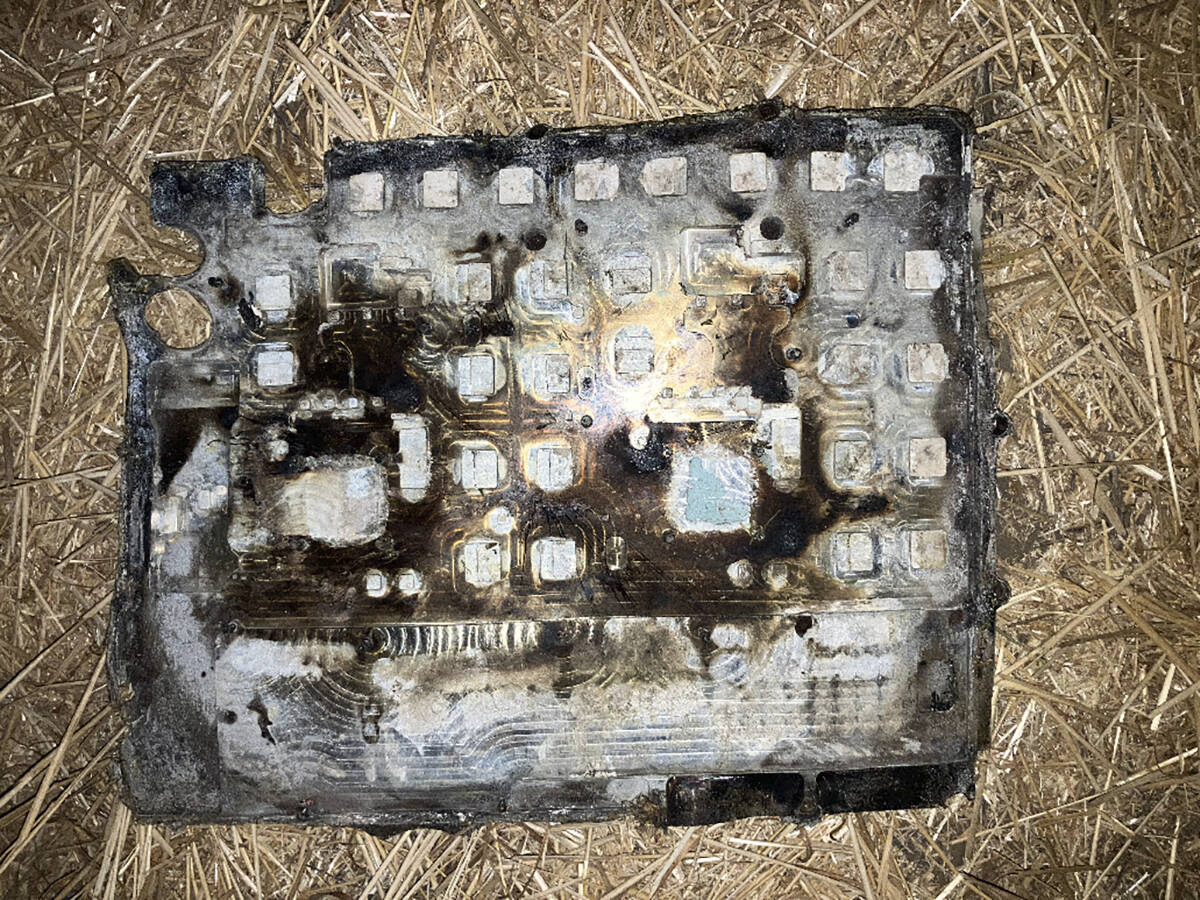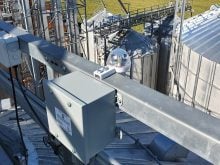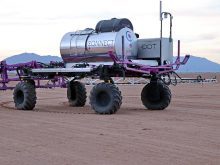Harnessing the wind is becoming a more popular pursuit among rural landowners in Saskatchewan.
Officials from SaskPower say more than 166 Saskatchewan residents have applied to take part in SaskPower’s net metering program.
Of those, about 145 have installed wind turbines.
The net metering program allows Saskatchewan residents to install their own electrical generating systems.
The energy produced can be used to offset power bills and reduce the amount of electricity bought from
SaskPower, the province’s crown-owned utility company.
Read Also

Farmers asked to keep an eye out for space junk
Farmers and landowners east of Saskatoon are asked to watch for possible debris in their fields after the re-entry of a satellite in late September.
The net metering program also provides a 35 percent rebate to people who install approved energy systems.
Rebates are capped at $35,000 per applicant and apply to wind turbines with a generating capacity of 100 kilowatt hours or less.
The rebates also apply to solar, low impact hydro, biomass, heat reclamation and flare gas systems.
Saskatchewan Research Council official Kelly Winder, who administers the rebate program, said 90 percent of the rebate applications involve wind turbines.
Items that qualify for the rebate include turbines and associated equipment, turbine installation costs, transportation costs, site development costs and expenditures related to feasibility studies and environmental assessments.
Residents who receive a rebate must give SRC researchers access to power generation data for 10 years.
To participate in the net metering program, Saskatchewan residents must contact SaskPower and pay for an integration study, which assesses whether SaskPower’s existing power grid can accommodate a small-scale electrical generating system.
After the assessment, SaskPower will provide a quote outlining necessary equipment upgrades.
In most cases, the only upgrade required is the installation of a bi-directional meter, which is normally installed at the base of the turbine tower.
The bi-directional meter measures net power consumption, which is the amount of power consumed minus the amount of power produced.
SRC will install a second meter to measure gross energy production from the turbine.
The data collected will help researchers learn more about the province’s wind resources and assess the feasibility of wind power generation in different regions of the province.
Under the net metering program, turbine owners who produce more power than they consume can bank surplus electricity and use it when consumption exceeds production.
However, surplus power can be banked only for 12 months.
To encourage participation in the program, SaskPower has also introduced a loan program that offers low-interest financing for eligible projects.
Residents interested in installing a wind turbine can contact a qualified wind turbine retailer and apply for low-rate financing on the spot.
Retailers complete the application form on site and submit it to SaskPower for approval.
Interest rates for projects valued between $25,000 and $50,000 are set at 3.8 percent. Rates for projects valued at $10,000 to $24,999 are 4.25 percent.
Interest rates are fixed for a five-year term. The maximum amortization period is 10 years.
Winder said most people who install wind turbines do not produce enough power to meet all their consumption needs.
In some cases, however, people who install large turbines and consume moderately could become self sufficient.
When the rebate program was introduced, most applicants were installing one or two kilowatt turbines.
More recently, the SRC has been processing rebates for more 10 kw systems.
The largest turbine ever approved under the rebate program was a 39.5 kw system.
Determining the optimal size of a wind system is a key consideration.
A one to five kilowatt turbine is suitable for most residential applications.
Farms with larger consumption might require a system of 10 to 50 kw.
Home and shop heating systems can be converted to electric if a larger system is installed and surplus power is consistently produced.
This would ensure that banked electricity is not forfeited to SaskPower and could reduce spending on natural gas or other heating fuel.
As a further incentive, the federal government has introduced tax measures that encourage the installation of green or alternative energy systems such as solar, water, wind and geothermal.
Bill Maclagan, a managing partner and tax specialist with the Canadian law firm Blakes, said wind turbines and many other types of power generating equipment bought between Feb. 23, 2005, and 2020 qualify for a 50 percent capital cost allowance (CCA) deduction, applied on a declining balance basis.
As with all capital cost allowance deductions, the half year rule applies in the year the equipment is bought.
Maclagan said a $100,000 wind turbine investment that received a $35,000 rebate under the net metering program would leave a capital cost of $65,000.
Under CCA provisions, that $65,000 investment would allow a taxpayer to reduce his taxable income by $16,250 in year one, $24,375 in year two, $12,187 in year three, $6,093 in year four, $3,046 in year five and so on until the cumulative value of tax deductions reaches $65,000.
Assuming an income tax rate of 35 percent, the actual dollar value of those tax deductions would be $5,687 in year one, $8,531 in year two, $4,265 in year three, $2,132 in year four and $1,066 in year five.
After five years, with rebates and tax savings accounted for, the actual cost of the $100,000 turbine would be reduced to roughly $56,000.
Other costs associated with assessing the economic viability of alternative energy systems may qualify for a further CCA deduction under the Canadian exploration expense provisions.
Rural consumers can determine the approximate payback time on a wind system by calculating income tax savings, rebate values, estimated power output and potential savings on annual electrical bills.
Saskatchewan’s net metering rebate program applies retroactively to systems bought on April 1, 2007, or later.
The program ends March 31, 2011.

















